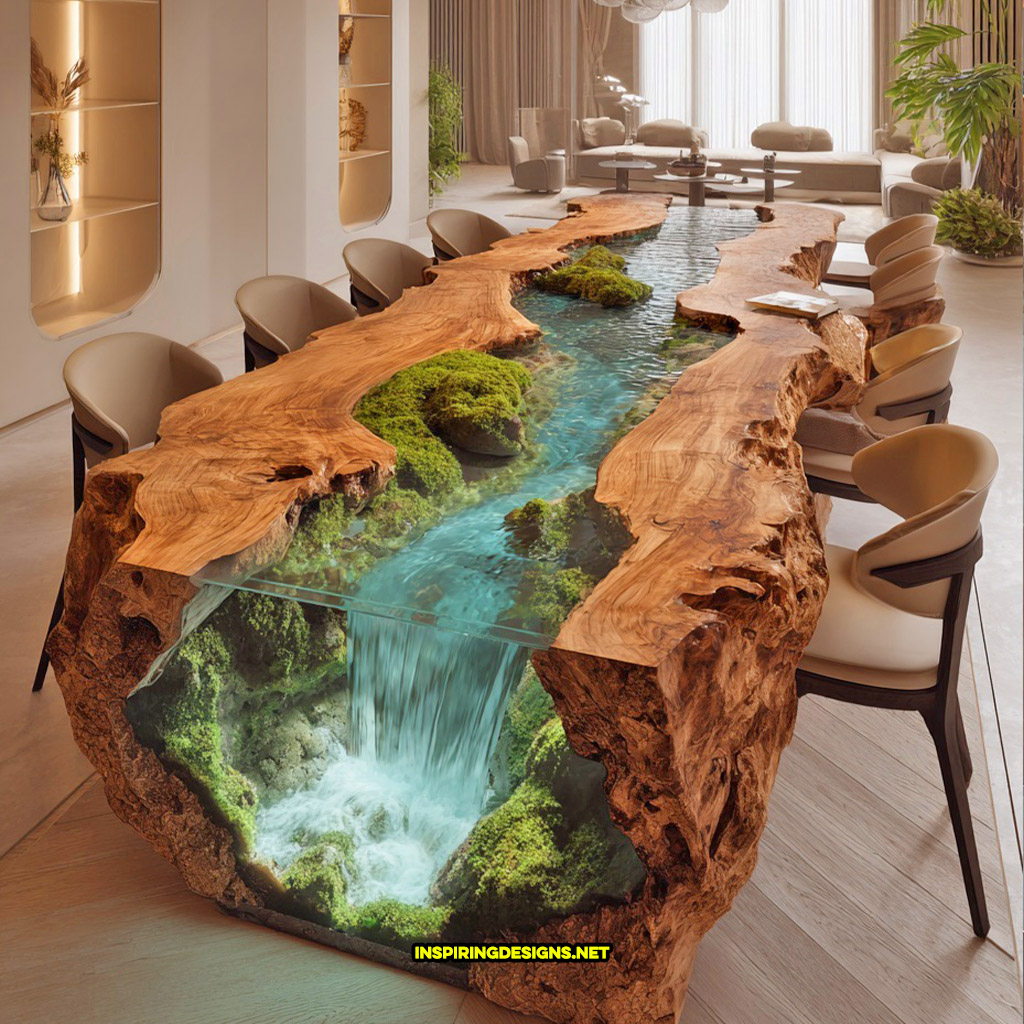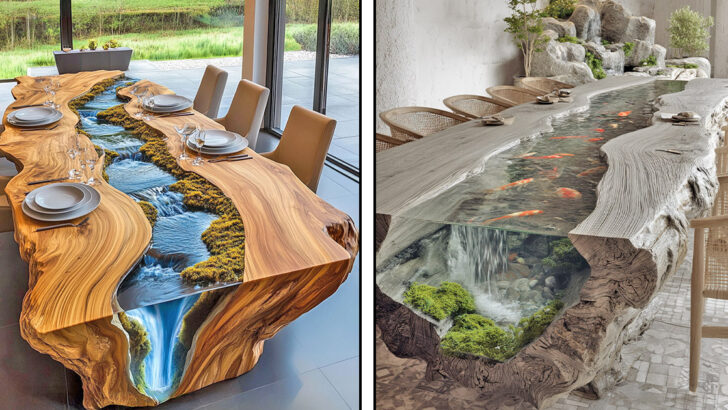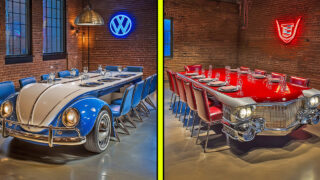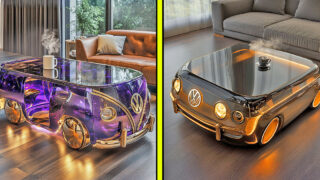Dining has never been so alive. A live edge river dining table takes a slab of character-rich hardwood and carves a crystal-clear channel through the middle, then fills it with a real, recirculating stream beneath tempered glass. Stones, moss, driftwood, lights, even koi or goldfish can live below the glass while you enjoy a perfectly flat, practical surface above. The result is part sculpture, part furniture, and completely unforgettable.
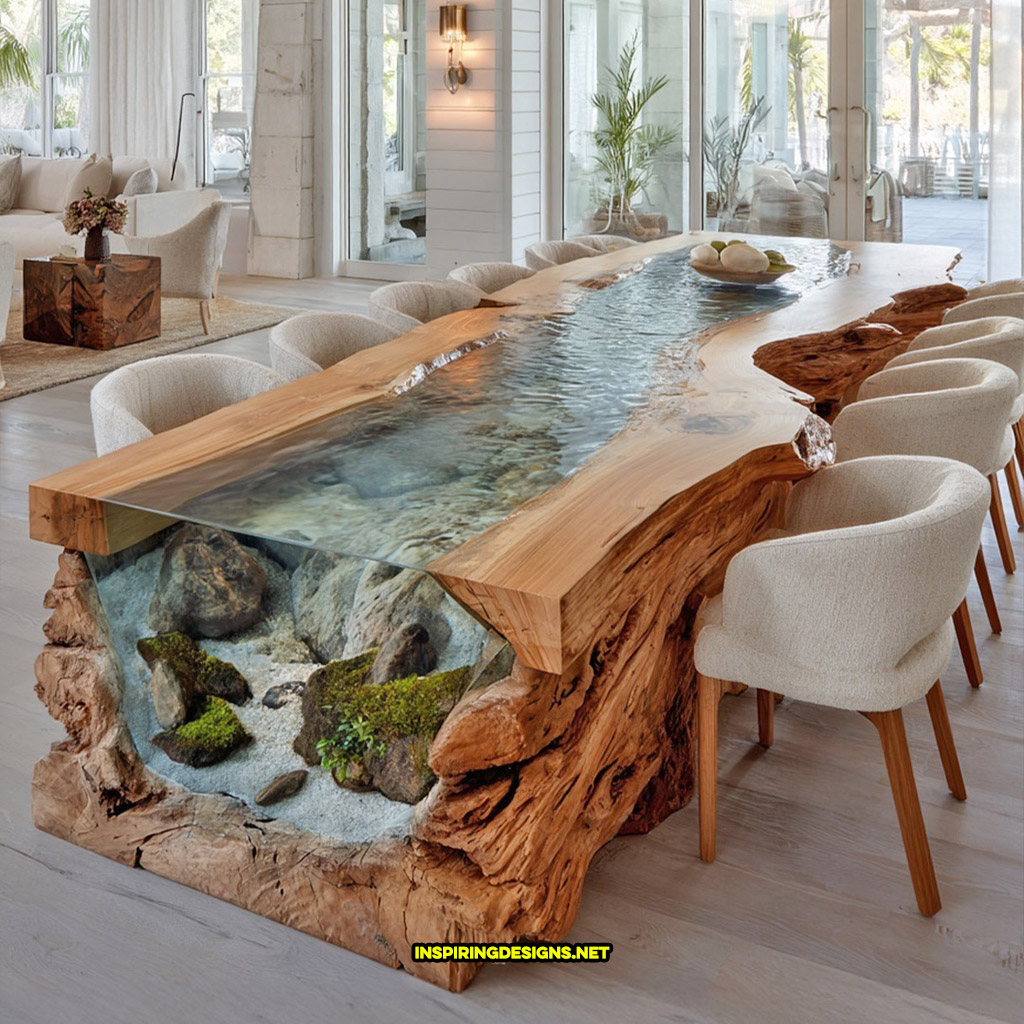
This guide covers how these tables work, the materials and options available, sizing, maintenance, and buying tips so you can choose or commission the perfect flowing water dining table for your space.
What Is a Live Edge River Dining Table
A live edge river dining table is built from one or two slabs of hardwood with the organic, bark-side edges preserved. Those natural edges become the banks of a river. Inside the banks, a sealed glass-covered channel hosts a miniature aquatic landscape with moving water. Every table is unique because no two slabs share the same shape.
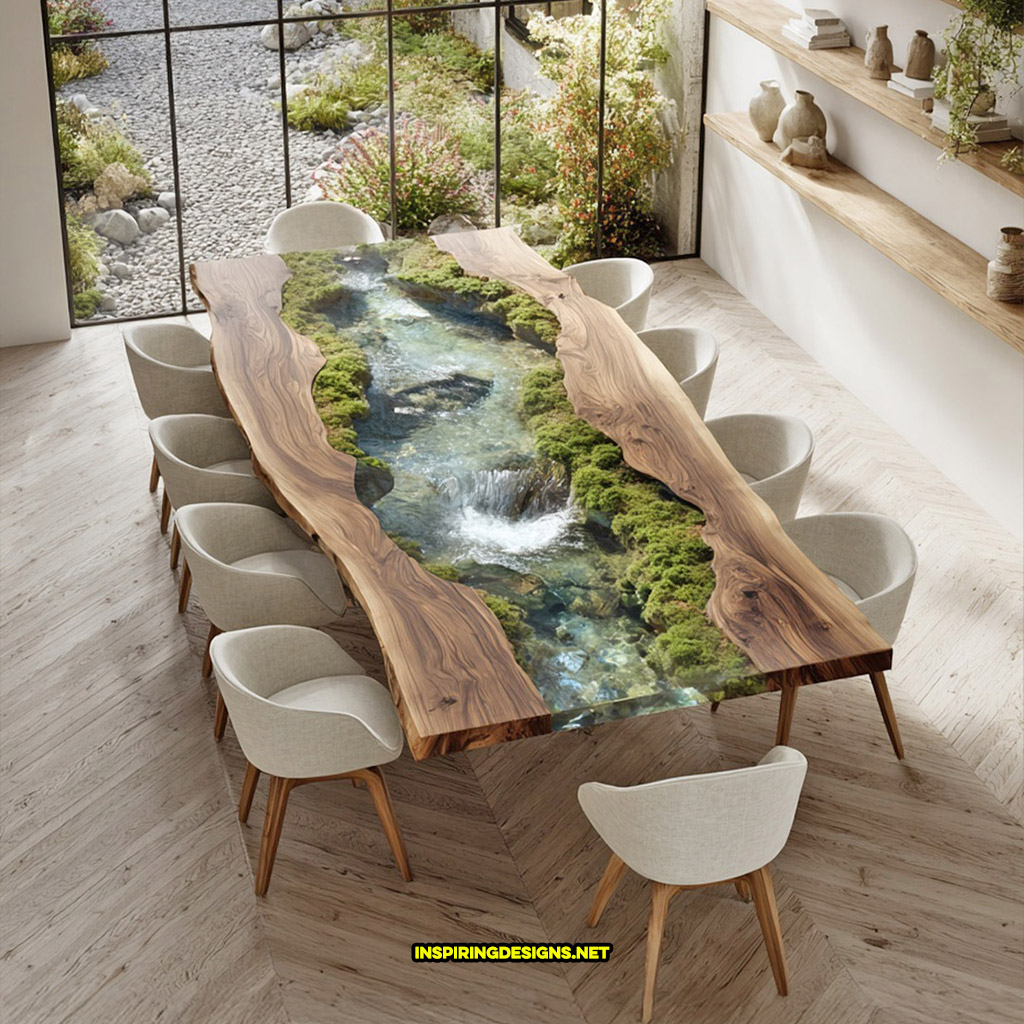
Key idea to remember. You get true live edge wood on top, a smooth glass surface for dining, and a living scene beneath that never splashes, spills, or evaporates noticeably because the river sits inside a closed loop.
Lets check out these incredible river dining tables in action via the video below!
How the Closed-Loop Water System Works
The magic is engineering you barely see. Inside the base is a compact reservoir and a quiet pump that circulates water through the channel. Flow speed is tuned for gentle movement and can be adjusted with a discreet controller. Because the system is recirculating and sealed under tempered glass, you avoid mess, odors, and top-offs. Many makers also include:
- Inline filtration to keep water crystal clear
- Access panels under the table for periodic service
- Optional UV sterilization for fish-safe models
- Silicone and epoxy barriers that isolate wood from moisture
Guests hear nothing louder than a whisper, yet the movement is mesmerizing enough to become the instant focal point in any room.

Premium Materials That Make Each Table One of a Kind
Every flowing water dining table starts with ethically sourced live edge slabs. Popular species include:
- Black walnut for deep chocolate tones and dramatic grain
- White oak for a lighter, modern look with excellent durability
- Teak for warm color and natural moisture resistance
- Acacia for bold figuring at a friendly price point
- Olive wood for swirling, high-contrast patterns
The riverbed is set with river stones, hand-placed moss, pebbles, and driftwood. Some designs add miniature cascades or tiered pools. Above everything, a piece of thick tempered glass sits flush with the wood so plates and glasses remain steady. The wood’s knots, checks, and curves are celebrated, not hidden, which is why every river layout feels like a tiny landscape.
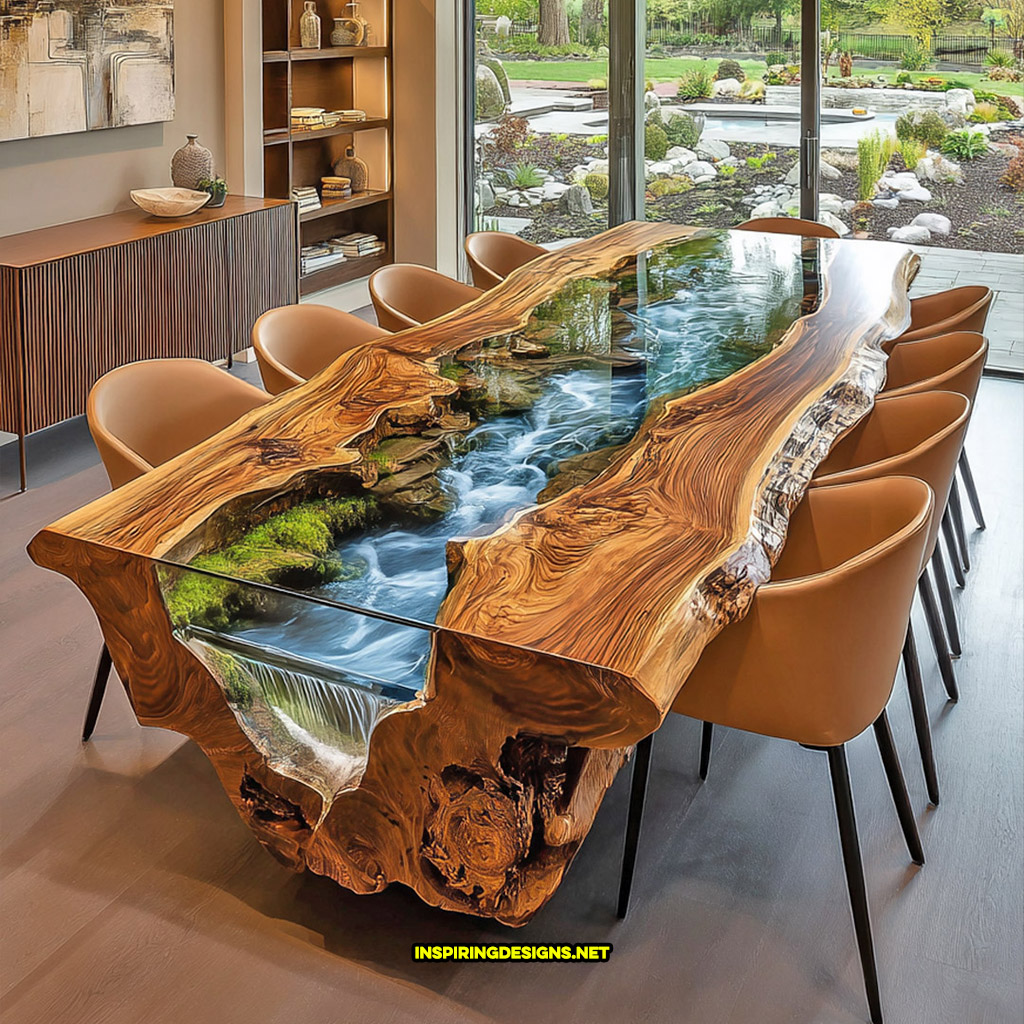
Sizes, Seating, and Typical Specs
These tables are designed to gather people. Makers build everything from family-size pieces to statement tables for hospitality and offices.
| Category | Typical Range or Options |
|---|---|
| Length | 6 to 14 feet, custom builds larger on request |
| Width | 3 to 5 feet depending on slab availability |
| Height | Standard 30 inches for dining chairs |
| Seating | 6 to 14 people comfortably |
| Glass | Tempered, usually 1/2 to 3/4 inch thick |
| Base | Hardwood trestle, metal sled legs, or concealed plinth |
| Water System | Quiet recirculating pump, hidden reservoir, inline filtration |
| Lighting | Optional warm or RGB LED under-lighting with remote |
Actual dimensions depend on the unique slab and the river path you choose, which is part of the fun.
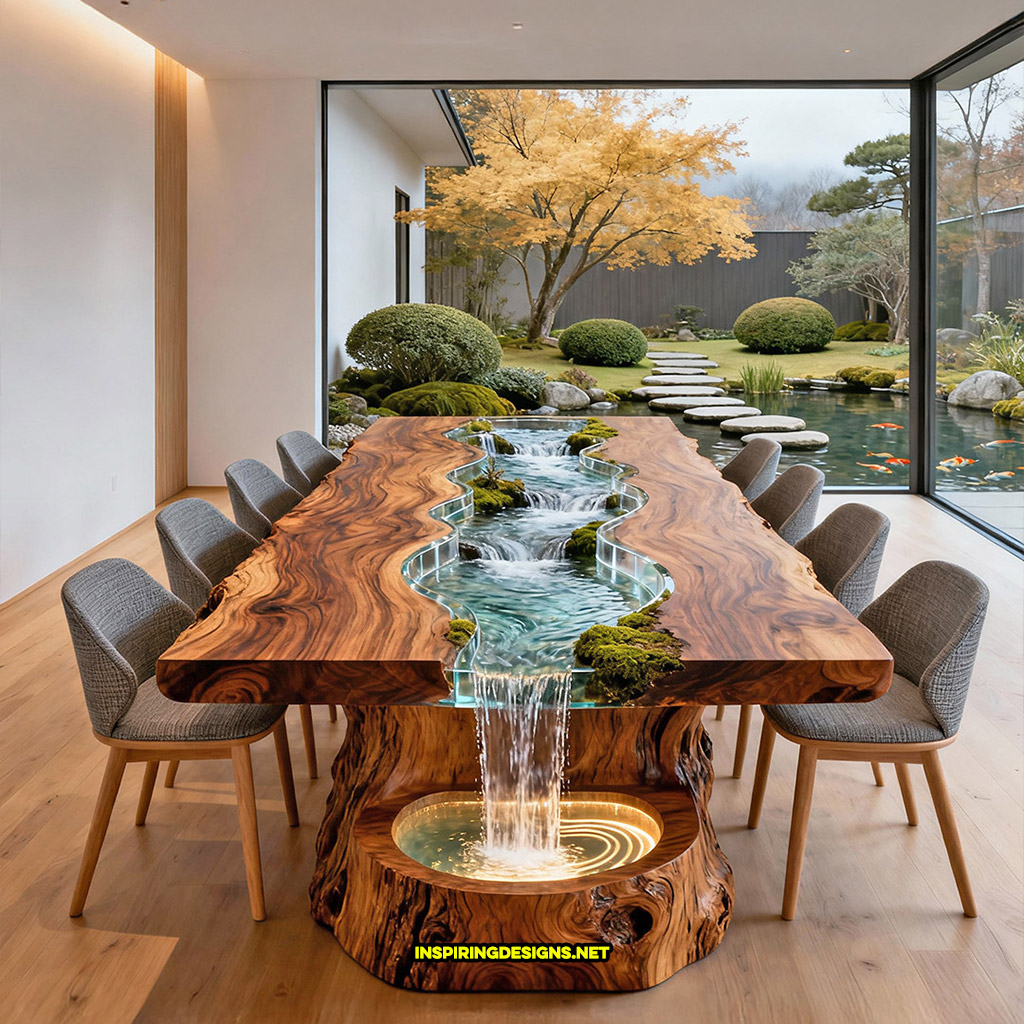
Design Options To Tailor Your Table
No two live edge river dining tables are alike, and customization is the norm. Popular options include:
- River style. Narrow creek that meanders, wide centerpiece with islands, or multi-tier layout with miniature waterfalls
- Glass finish. Crystal clear for maximum visibility, light smoke for drama, or softly frosted for a diffused, zen look
- Lighting. Hidden LED strips wash the riverbed at night and can be dimmed or color-tuned
- Fish or fishless. Choose a tranquil aquatic scene or opt for live goldfish or koi sealed safely beneath the glass
- Edges and finish. Natural edge cleaned and softened for comfort, sealed with food-safe oil or hardwax for a tactile, satin touch
- Base style. Modern metal, sculpted hardwood, or a hidden plinth that makes the tabletop appear to float
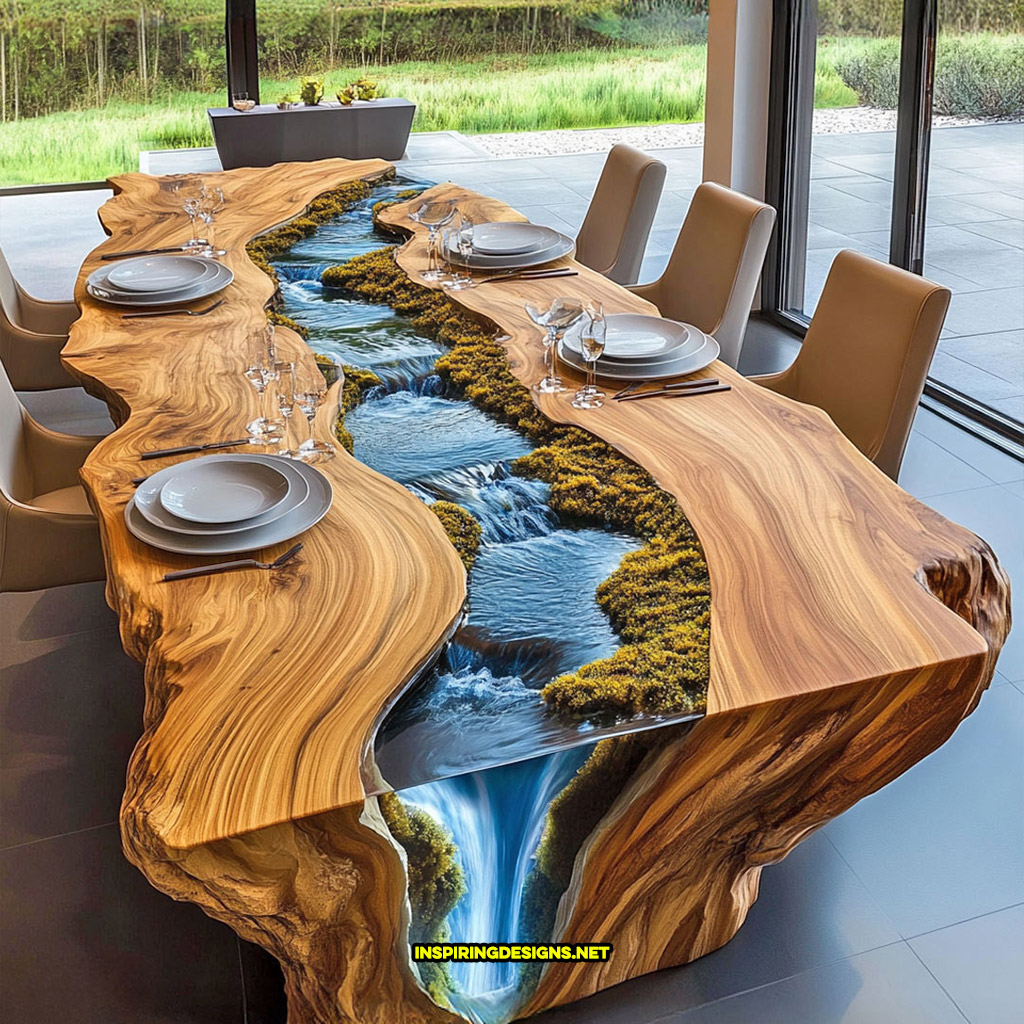
Safety and Everyday Practicality
These pieces look like museum art yet function as true workhorses.
- The glass is tempered and seated flush, so dinnerware sits level.
- The structure is engineered to keep water fully contained. There are no open areas above the glass.
- The pump and reservoir are isolated inside the base with rubber vibration pads to keep it quiet during meals.
- For fish-ready models, water chemistry is stabilized using filtration and UV. Feeding is handled through a concealed port.
In daily use, cleanup is routine. Wipe the glass as you would any tabletop, dust the wood with a dry cloth, and occasionally refresh the filter per your maker’s schedule.
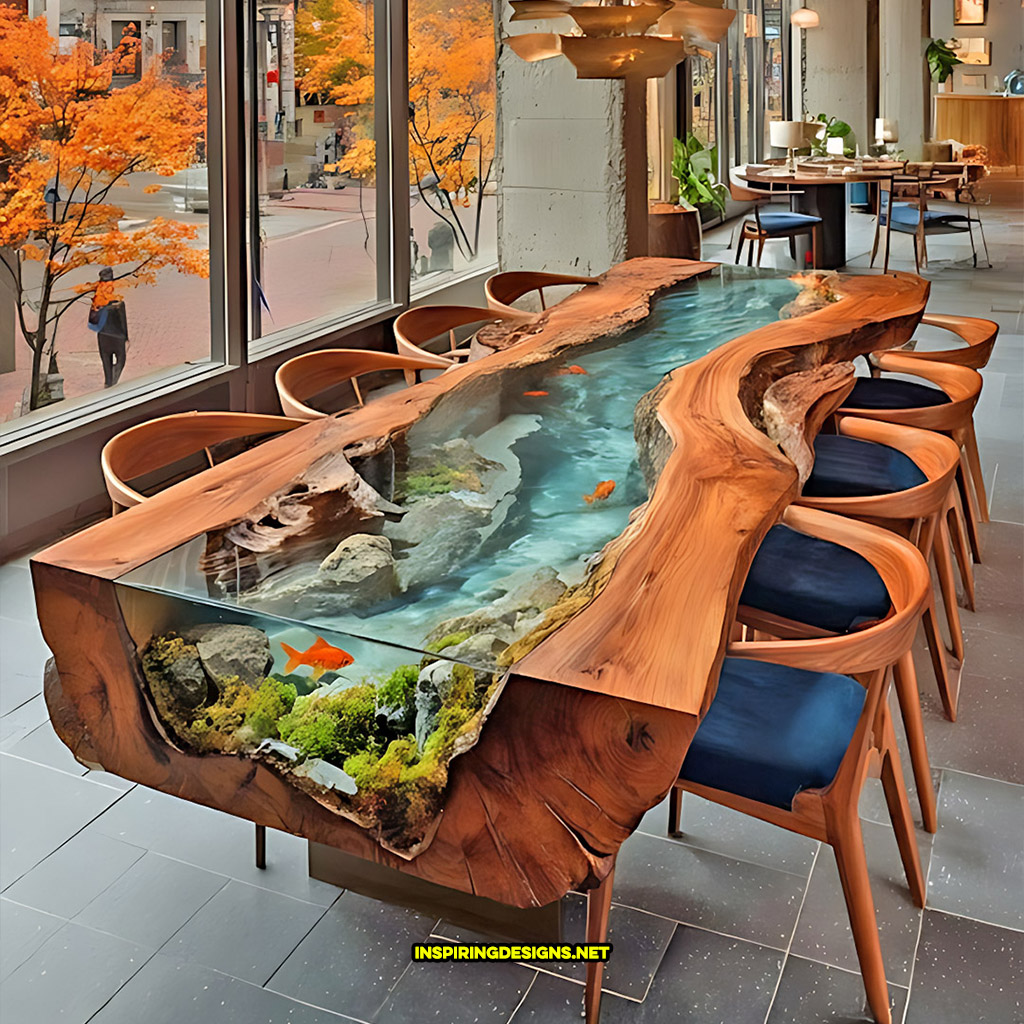
Maintenance: What Owners Actually Do
Plan on simple, predictable care.
- Glass. Use a non-ammonia glass cleaner and microfiber cloth.
- Wood. Follow the finish used by your maker. Oil or hardwax surfaces prefer an occasional refresh with recommended products.
- Water system. Replace or rinse filters every few months. For fish models, follow the maker’s schedule for beads or carbon media.
- Pump. Access through a hidden panel. Most owners never touch it beyond scheduled service.
- Lighting. LEDs are long-life and accessible if needed.
Ask your builder for a maintenance checklist that matches your exact components.
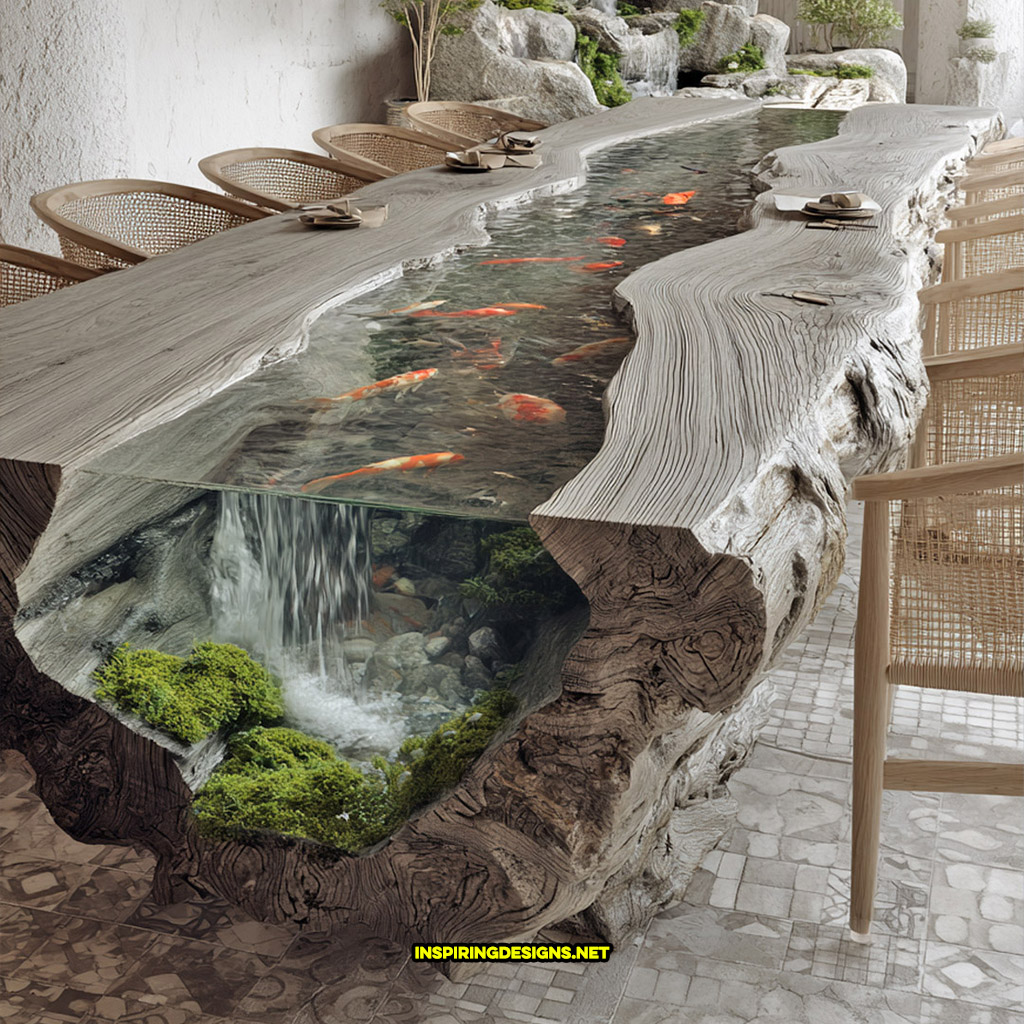
Where These Tables Fit Best
Where do they shine The short answer is anywhere people gather.
- Dining rooms and open-plan kitchens. Turn casual dinners into memorable experiences.
- Restaurants and boutique cafés. A single table can become your signature attraction and social media magnet.
- Offices and studios. Use a river table in a boardroom for brainstorming with a serene backdrop.
- Spas, wellness resorts, eco-lodges. Perfect for biophilic interiors that calm and restore.
- Showrooms and lobbies. Anchor large spaces with a natural conversation piece that sets your brand apart.
Because the movement is gentle and quiet, the table enhances ambience without competing with conversation.
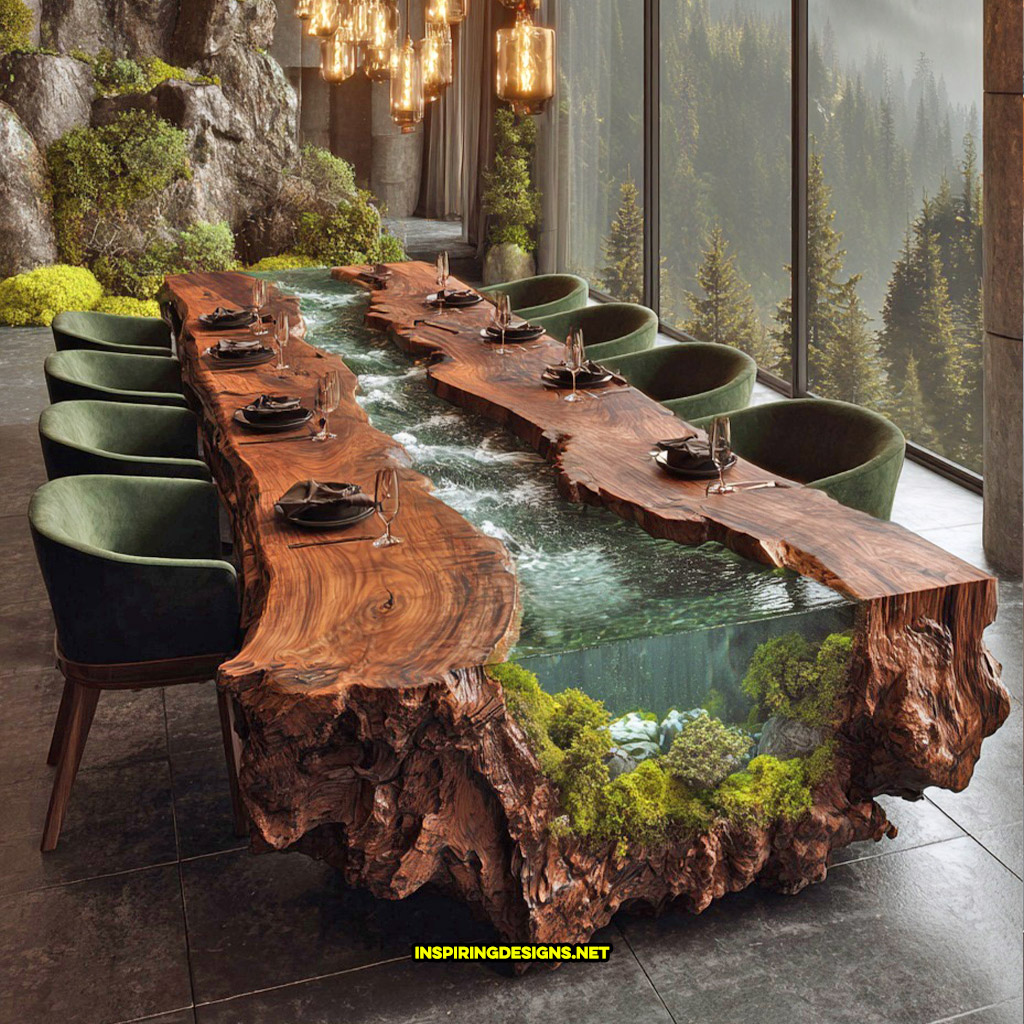
Who Buys Live Edge River Dining Tables
Owners tend to share a love for nature and original design. If you are drawn to biophilic interiors, custom craftsmanship, and furniture that sparks connection, you are the audience. Interior designers and architects specify these tables for standout residential projects, executive spaces, and boutique hospitality where a single piece must deliver both utility and emotion.
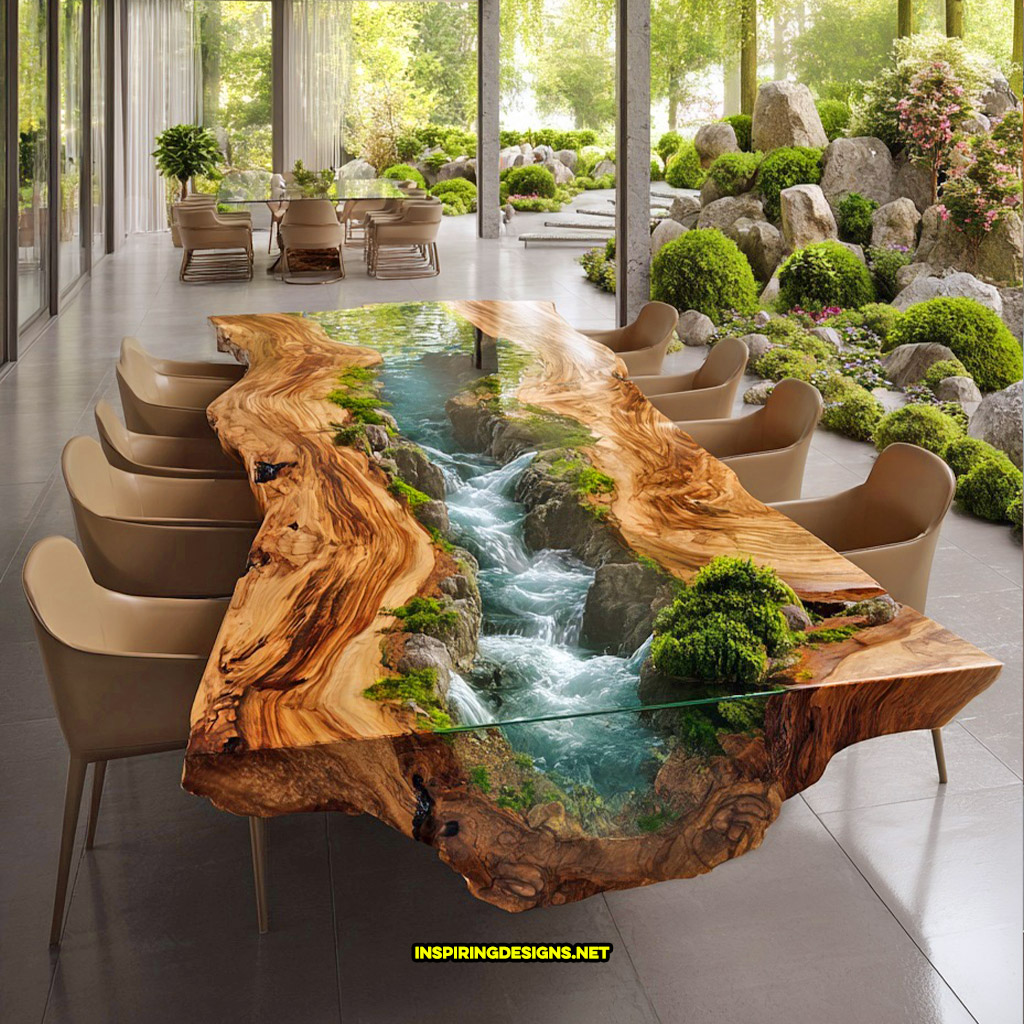
Buying Guide: Questions To Ask a Maker
When you commission or purchase a flowing water dining table, use these questions to compare builders:
- Which wood species are available now, and can I choose my slab
- What glass thickness do you recommend for my table size
- How is the water system accessed, filtered, and controlled
- Is the pump rated for continuous duty and whisper-quiet operation
- What finish is on the wood and is it food-safe
- Can you integrate lighting, and how is it powered and dimmed
- If I choose fish, what’s included for long-term care
- What is the warranty on the pump, LEDs, and workmanship
- How will delivery and installation work inside my space
- What does routine maintenance look like in the first year
Clear answers indicate a seasoned shop that blends fine woodworking with smart engineering.
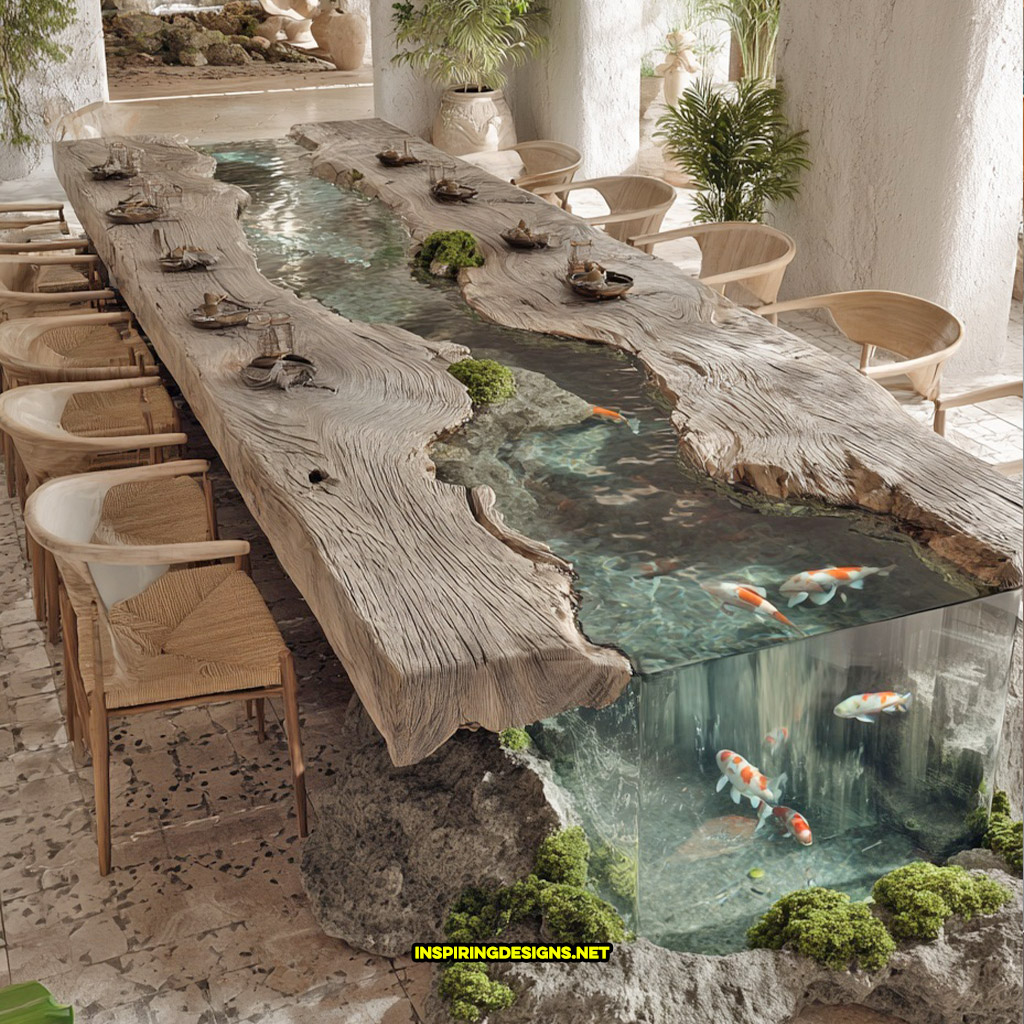
Popular Layout Ideas To Inspire Your Design
- Mountain stream. A narrow, twisting creek with smooth pebbles and a few mossy boulders, perfect for minimalist spaces.
- Terraced falls. Two or three shallow levels that step down into a hidden reservoir. LED lighting makes the cascades glow at night.
- Island path. A wider, slow river with small stone islands that create eddies and visual rhythm.
- Zen garden. Sparse rock placements, frosted glass, and gentle flow for spa-like calm.
- Aquarium table. A deeper channel with mild current and live goldfish or koi gliding beneath the surface.
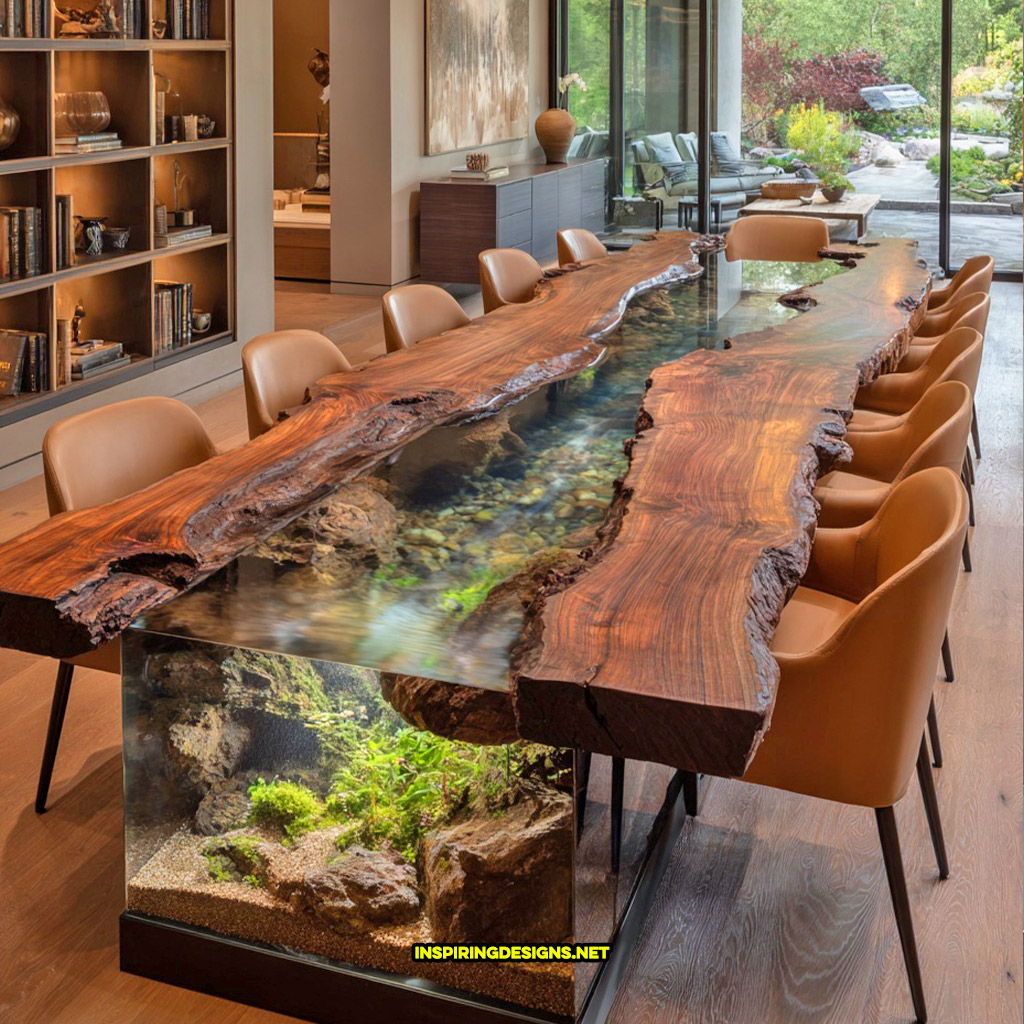
Style Pairings and Seating Tips
- Pair walnut or olive with upholstered chairs in linen or bouclé for warm modern rooms.
- Choose white oak or ash with light leather for Scandinavian and Japandi interiors.
- Set a teak river table near indoor plants for tropical energy.
- Use armless chairs on the long sides for easy river viewing. If your table has a waterfall element at one end, leave that side open as a visual feature.
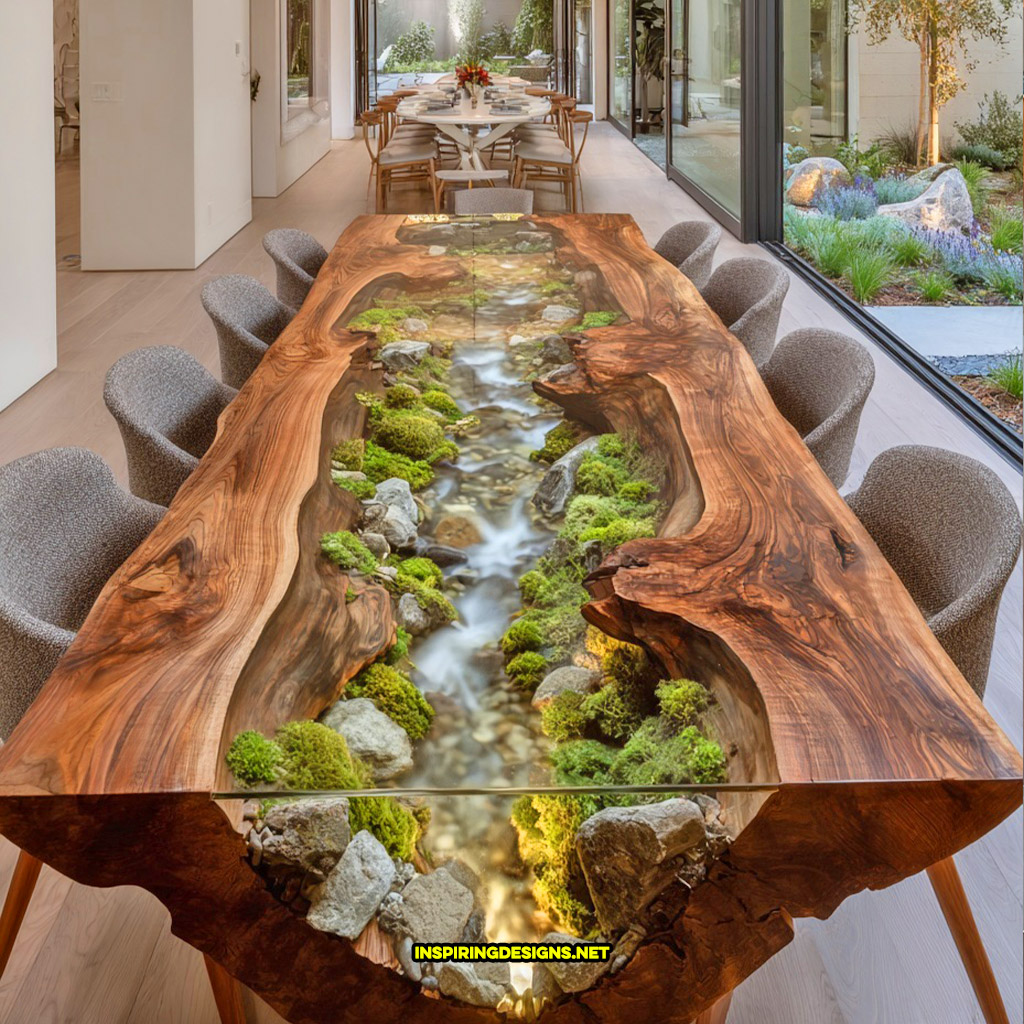
Sustainability Considerations
Ask your maker about sustainable sourcing and responsible finishes. Many shops use slabs rescued from storm-fallen or urban trees. The recirculating water uses minimal power, and LEDs sip energy while delivering dramatic effect.
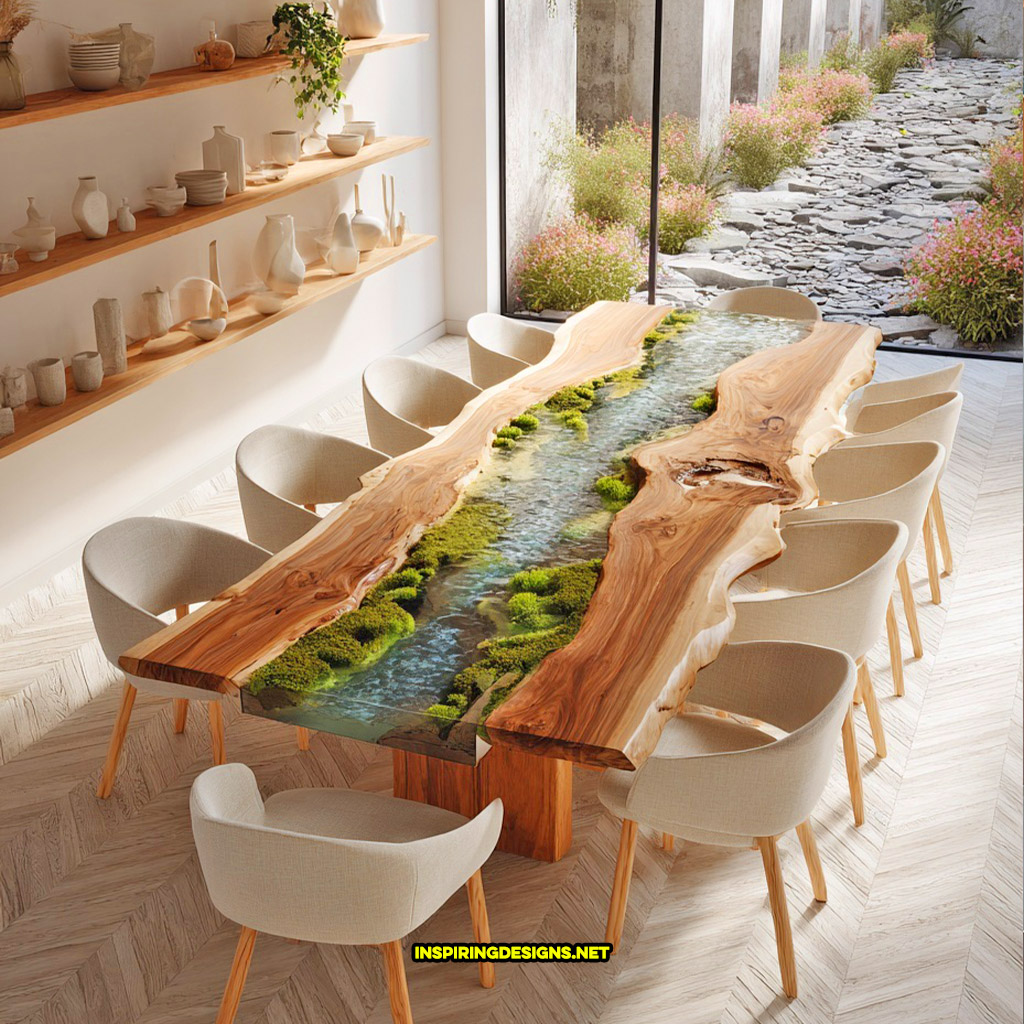
Quick Specs Recap
- Real flowing water under tempered glass
- Recirculating pump hidden in the base with filtration
- Live edge hardwood banks in walnut, oak, acacia, teak, or olive
- Optional LEDs, frosted or smoked glass, and fish-ready builds
- Standard dining height with seating for 6 to 14
- Unique river layouts, from meandering creeks to tiered waterfalls
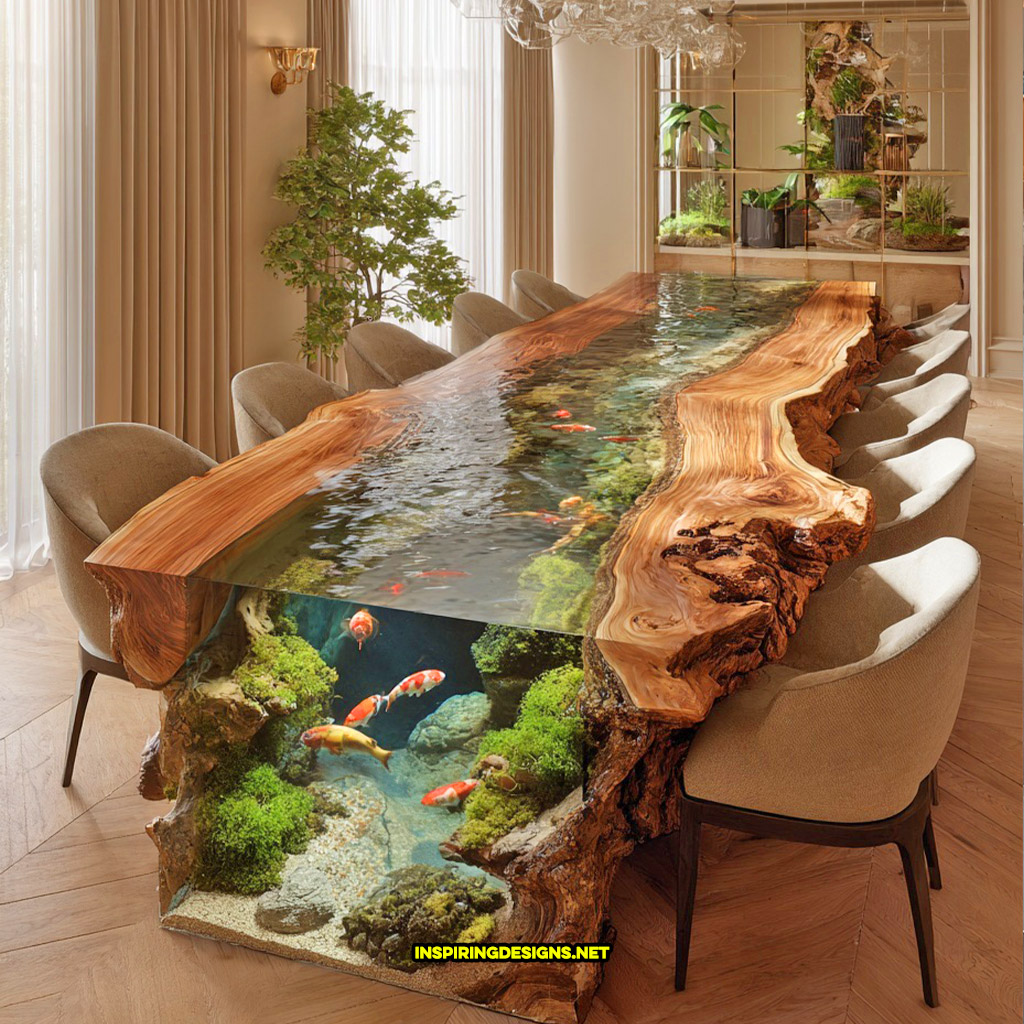
Frequently Asked Questions
Do they make noise
The system is engineered for quiet operation. You may notice a gentle hum at the lowest ambient levels, but conversation remains clear.
Will the wood get damaged by moisture
No. The river channel is isolated from the slabs using sealants and barriers. The wood is finished with durable, food-safe coatings.
Can I choose my exact slab
Yes with most custom builders. You can often select from photos or visit the shop to pick the boards that will become your river’s banks.
Is the glass safe
The top is tempered and sized for the span of your table. It sits flush and is strong enough for everyday dining.
What if I move
Tables break down like traditional large furniture. Many bases detach from the top, and the internal reservoir can be drained and re-primed on site.
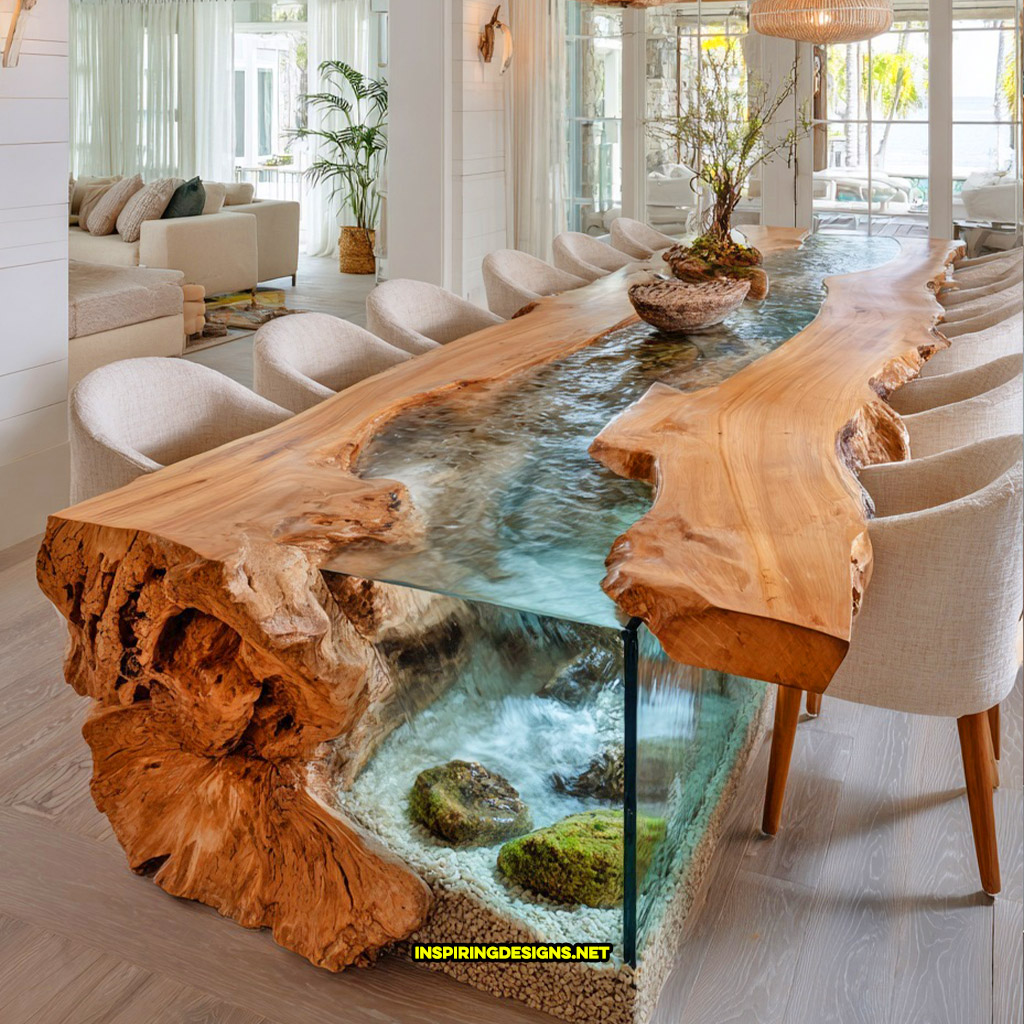
Why These Tables Feel So Special
A live edge river dining table captures two forces at once. The wood tells the story of a tree’s long life. The water flows on with constant motion, a reminder of mountain streams and quiet retreats. Together, they turn everyday meals into immersive moments. You will catch yourself daydreaming at the river while the food disappears and conversations stretch long into the evening.
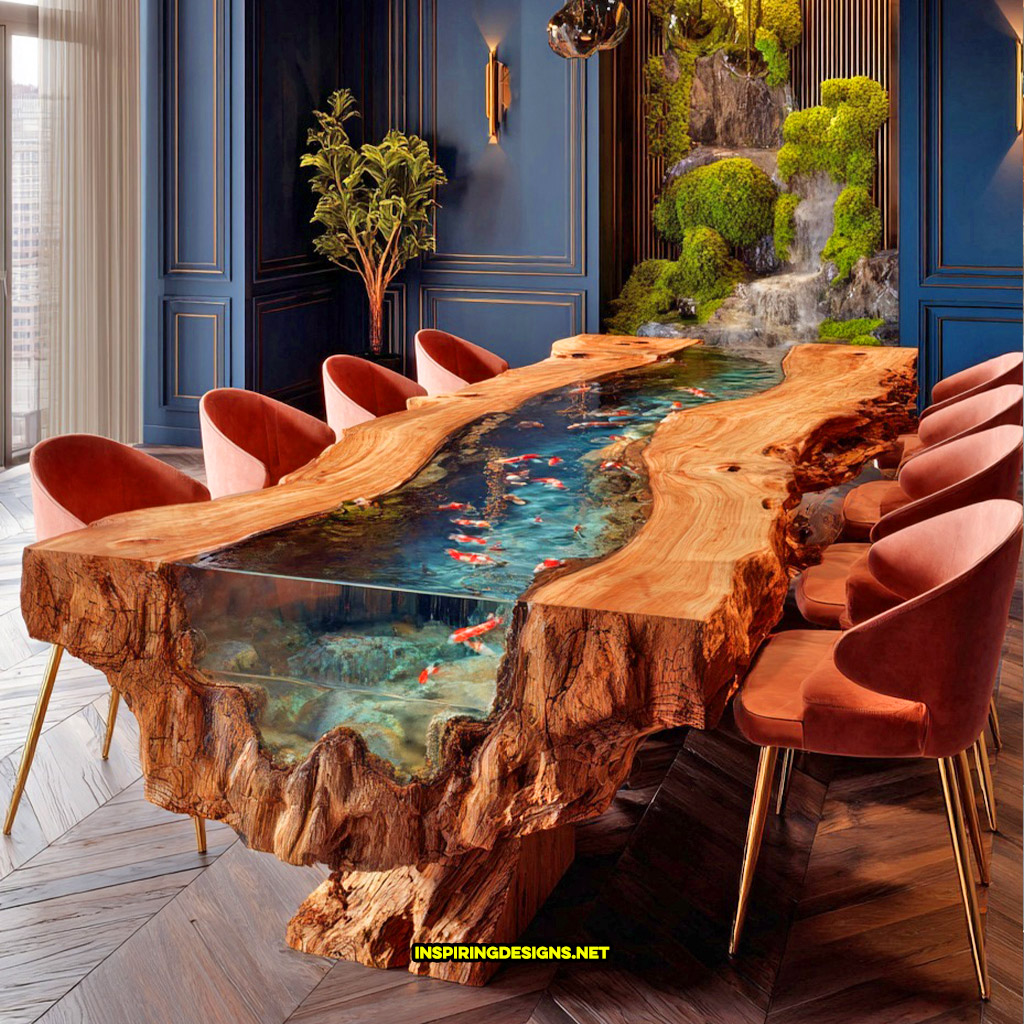
Lets check out some pros vs cons to see if a real river dining table is right for your home!
| Pros | Cons |
|---|---|
| Showstopping centerpiece that elevates any space | Higher upfront cost than standard tables |
| Real flowing river creates a calming ambience | Heavier and harder to move |
| Tempered glass surface is flat, durable, and easy to clean | Glass shows fingerprints and needs routine wiping |
| Closed-loop system prevents spills and water loss | Pump and filtration require periodic maintenance |
| Customizable wood species, river layout, and lighting | Longer lead times for custom builds |
| Works in homes, restaurants, and offices | Requires nearby power outlet for pump and lights |
| Biophilic design boosts relaxation and creativity | Not ideal for very rough use or heavy impacts |
| Each piece is one of a kind | Resale market is niche |
| Optional fish create a living ecosystem | Fish models add care and water quality monitoring |
| Conversation magnet for guests and clients | Can distract in settings that need strict focus |
